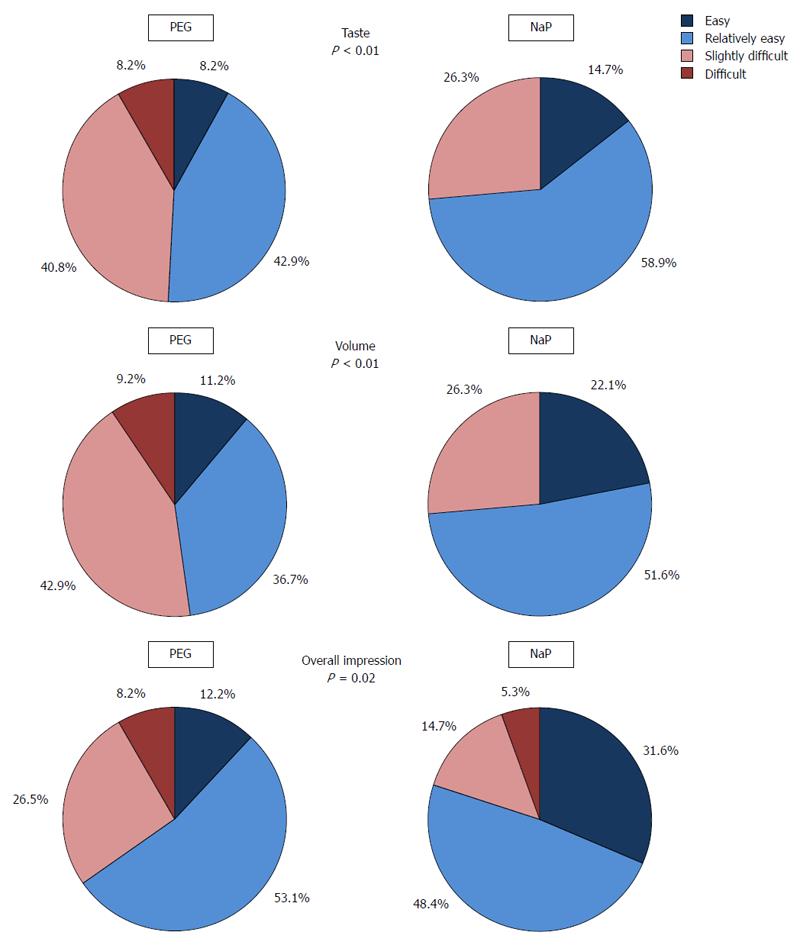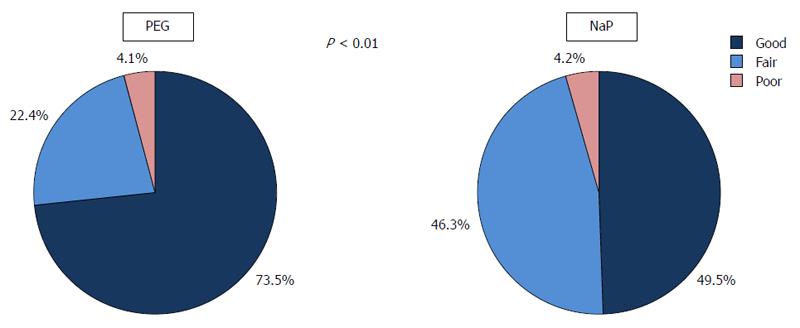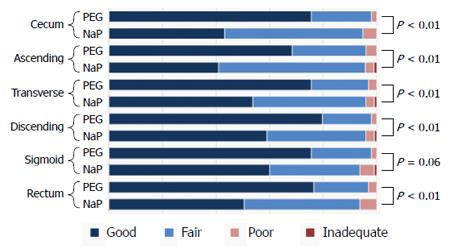Copyright
©The Author(s) 2017.
World J Gastroenterol. Jun 28, 2017; 23(24): 4454-4461
Published online Jun 28, 2017. doi: 10.3748/wjg.v23.i24.4454
Published online Jun 28, 2017. doi: 10.3748/wjg.v23.i24.4454
Figure 1 Flow chart of patient enrollment.
PEG: Polyethylene glycol; NaP: Sodium phosphate.
Figure 2 Tolerability of each laxative.
There were significant differences between the polyethylene glycol (PEG) group and sodium phosphate (NaP) group in the indexes of taste, volume and overall impression (P < 0.01, P < 0.01, and P = 0.02, respectively). The P values were calculated by Fisher’s exact test.
Figure 3 Comparison of bowel cleansing quality.
The overall quality of bowel cleansing in the polyethylene glycol (PEG) group was found to be better than that in the sodium phosphate (NaP) group (P < 0.01). No cases were considered inadequate in either group. The P value was calculated by Fisher’s exact test.
Figure 4 Quality of bowel cleansing at each segment.
Polyethylene glycol (PEG) provided significantly better bowel cleansing in all of the colonic segments, except for the sigmoid colon. The P values were calculated by Fisher’s exact test.
- Citation: Ako S, Takemoto K, Yasutomi E, Sakaguchi C, Murakami M, Sunami T, Oka S, Kenta H, Okazaki N, Baba Y, Yamasaki Y, Asato T, Kawai D, Takenaka R, Tsugeno H, Hiraoka S, Kato J, Fujiki S. Comparing reduced-dose sodium phosphate tablets to 2 L of polyethylene glycol: A randomized study. World J Gastroenterol 2017; 23(24): 4454-4461
- URL: https://www.wjgnet.com/1007-9327/full/v23/i24/4454.htm
- DOI: https://dx.doi.org/10.3748/wjg.v23.i24.4454












